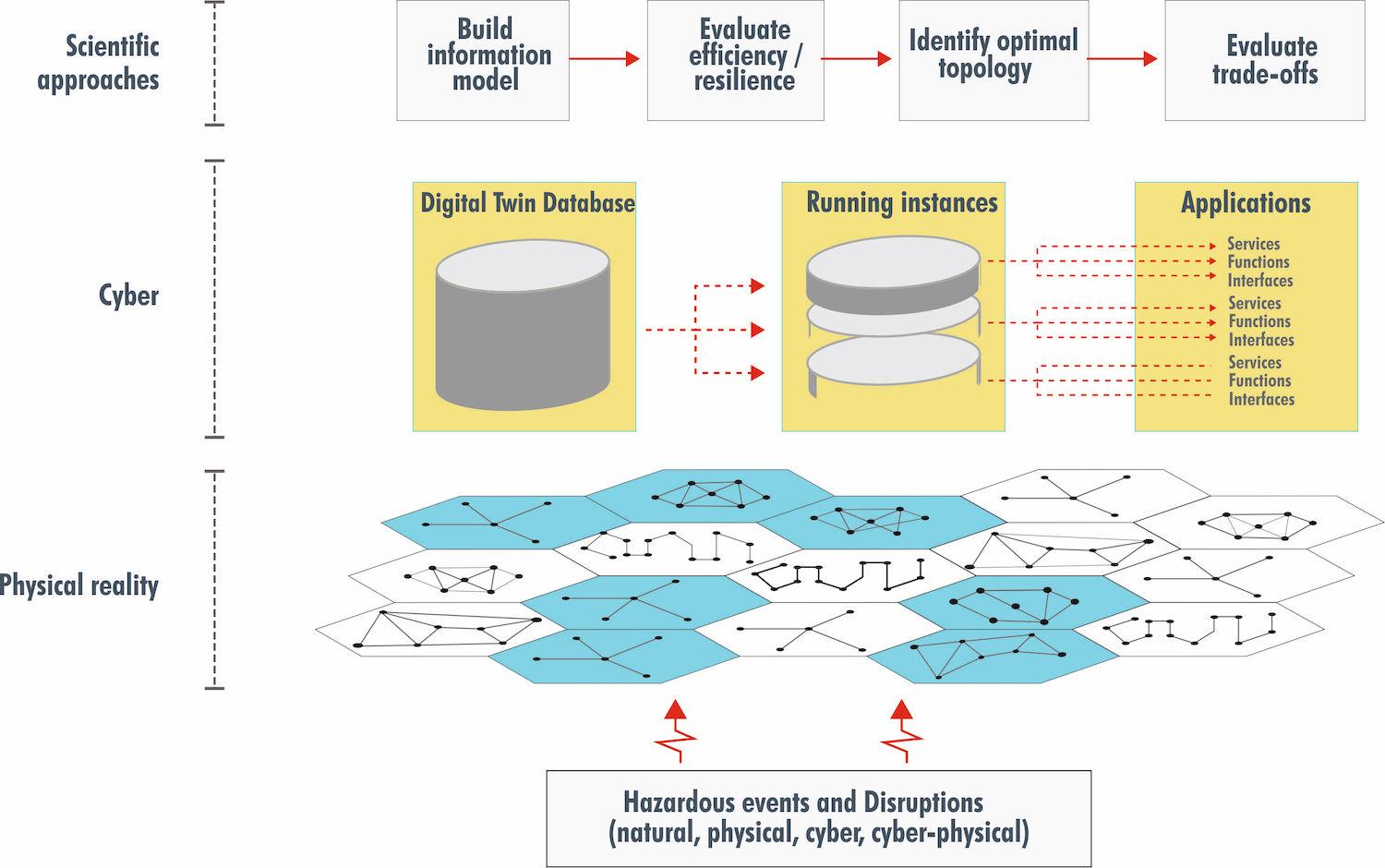Digital Twin-Enabled System Resilience

Physical systems interrelate spatially and temporally, and are often interdependent. As such, planning for resilience requires a system-of-systems approach, often involving multiple stakeholders and collaborative decision making.
This research module aims to create both the decision support and the operation control interface of the future by creating digital twins to model and simulate interdependent systems. Such an integrated digital twin-enabled analysis is the first of its kind, as existing literature still considers the physical layer (e.g., microgrids) and cyber aspects as independent problems.
The representation of the physical world through a digital twin allows the analysis of data and monitoring of systems to head off problems before they even occur, prevent downtime, develop new opportunities and plan for the future. Based on in-depth exploration of energy systems and by coupling advanced numerical models and real-time data, a digital twin is able to accurately reveal complex patterns of operation in highly interconnected energy systems.
As a case study, the team will create a digital twin of an airport’s energy systems, taking into account renewable resources (microgrids), airport buildings, utility systems, and cyber systems operations and their interdependencies. System resilience can be analysed by simulating scenarios such as microgrids and allied multi-grid infrastructure, and the impact of hazards, risks, and vulnerabilities on the airport’s energy systems.
Upon considering the energy infrastructure within the spatio-temporal context of the urban environment, the digital twin developed in this module can become the basis for making more informed decisions in the planning and operation of energy systems. Hereto, and in collaboration with other modules and clusters, the digital twin will be complemented with other systems’ (partial) models, where available, emphasising interdependencies within a digital twin-enabled collaborative decision support environment.

Expected outcomes
- Development information models along with the multiphysics models of the power systems to enable the application of digital twin-enabled resilience analysis
- Development of digital twin for vulnerability and dynamic resilience modelling and real-time simulation for an airport’s energy systems to improve understanding of the geographical and cyber interdependencies between the cyber, microgrids, terminal, navigation, and utility systems
- Improve understanding of the implications of digital twin technology when applied to the resilience assessment of energy systems
- Enable real-time decision-making capabilities through improved understanding of the topologies of the cyber-physical (e.g. energy systems) within the spatio-temporal context of the urban environment
